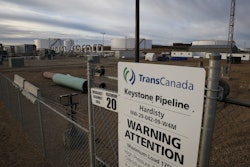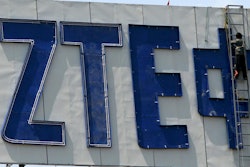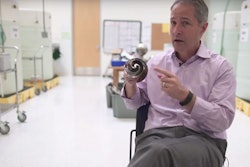
KEEP YOUR FACILITY SAFE AND CLEAN FOR LESS
GUIDE TO REDUCING CLEANING
COSTS FOR INDUSTRIAL FACILITIES
Keeping your facility clean is very important to protecting your employees, production line,
products and overall operations. You also want to be sure you’re keeping costs down by being
as efficient as possible. Four key items to consider are understanding your space, improving
sustainability, enhancing safety, and maximizing productivity.
UNDERSTAND YOUR SPACE
Understanding the challenges your space presents is critical to your success. Consider the square
footage and temperatures, types of floor surface, types of debris present – from liquids and
grease to dust and debris – in different areas.
Tight, confined spaces require a certain set of tools, such as brooms, mops or a compact
cleaning machine, while larger, more open spaces allow you to use bigger, more robust cleaning
equipment. To maximize employee productivity, make sure you have the right cleaning fleet.
Also, different floor surfaces require different types of floor coatings to ensure floors are safe and
not too slippery, reducing the potential for costly accidents.
GUIDE TO REDUCING CLEANING COSTS FOR INDUSTRIAL FACILITIES
RECEIVING
WAREHOUSEPACKAGING
PRODUCTION
OFFICE SPACE
SHIPPING
#1
It’s also important to consider the types of dirt, dust, debris and soils that need to be cleaned.
If your crew typically sweeps before scrubbing, consider using an integrated machine that can
pick up dust and debris before scrubbing to reduce time spent doing both tasks. Some cleaning
machines offer on-board wand attachments to enhance productivity by allowing one-pass
cleaning. If dust is an issue, look for equipment that offers excellent dust filtration, reducing
the need for additional passes.
LEVERAGE NEW TECHNOLOGY
Everyone is looking for ways to minimize their environmental
impact. Reducing water and chemical use in cleaning
operations can support your facility’s sustainability initiatives,
in addition to reducing costs.
A newer technology to the cleaning industry, electrically
converted water, enables cleaning without using traditional
cleaning chemicals. Safe and effective, electrically converted
water is an innovative cleaning solution that reduces
environmental impact compared to daily floor cleaning
chemicals and methods.
Some of these systems enhance productivity by enabling
crews to clean up to three times longer with a single tank of
water, and use up to 70 percent less water than conventional
floor cleaning equipment.
Use up to 70 percent less water than
conventional floor cleaning equipment
GUIDE TO REDUCING CLEANING COSTS FOR INDUSTRIAL FACILITIES
#2
Clean up to three times longer
with a single tank of water
3X
LONGER
70%
LESS
WATER
CLEAN
ENHANCE FACILITY SAFETY
Keeping your facility clean and safe, and ensuring the safety of employees and visitors is an important
job facility managers perform. Reducing cleaning-related hazards – including slippery floors, poor indoor
air quality, and handling and mixing chemicals – will make your facility safer and reduce potential costs.
REDUCE SLIP AND FALL INCIDENTS
According to the National Safety Council, falls are among the leading causes of unintentional injuries in
the United States, accounting for approximately 8.9 million visits to emergency departments annually.1
Slip and fall incidents involving employees frequently result in disabling injuries, lost workdays, reduced
productivity and expensive workers compensation claims.
According to the 2006 Liberty Mutual Workplace Safety Index, the annual direct cost of disabling
occupational injuries due to slips, trips and falls was estimated to exceed $11 billion. The average cost
from slip and falls is $22,800 per accident, and the average workers compensation claim is $19,0002.
The National Floor Safety Institute (NFSI) documents that 55 percent of all slip and fall incidents are
caused in some way by the floor3. Water, other fluids and soap build up can make floors slippery,
however, cleaning floors correctly helps minimize the risk of slipping. Excellent water recovery also
reduces the chance of slip and fall injuries.
WAYS TO REDUCE SLIP AND FALLS
1. Ensure your cleaning equipment and team are not leaving standing water behind when cleaning.
Excellent water recovery systems on machines reduce the chance of slip and fall injuries.
2. Make sure you don’t have excessive chemical buildup that may make floors slippery. Chemical-
free cleaning makes floors safer by removing accumulated cleaning chemical buildup that makes
floors slippery.
3. Use NFSI-certified products to ensure your floors are high-traction and safer for employees and
others in your facility. Using floor cleaning equipment that is certified by the NFSI as “high-
traction” helps make your floors safer for employees.
GUIDE TO REDUCING CLEANING COSTS FOR INDUSTRIAL FACILITIES
#3
REDUCE EXPOSURE TO VOCs
Some cleaning products and floor finishes contain volatile organic compounds (VOCs). Fragrances and
scents used in conventional cleaning chemicals also often contain harsh chemicals that may cause injuries
or breathing irritation during handling.
According to the U.S. House of Representatives Committee on Science and Technology, 95 percent of the
ingredients in fragrances are derived from petroleum.4 Petroleum-derived ingredients found in fragrances
include potentially dangerous substances such as toluene, acetone, phthalates and derivatives of benzene.
TO REDUCE VOCs – AND POTENTIAL COSTS FROM INJURIES – IN YOUR MANUFACTURING FACILITY
1. Choose low-emitting cleaning products that have been third-party certified by reputable
organizations.
2. Minimize or eliminate the use of harsh, solvent-based cleaners or cleaners with strong fragrances.
Carefully read labels to determine if cleaning products are fragrance-free, and avoid “scent-free”
products that may contain masking fragrances.
REDUCE AIRBORNE DUST
Airborne dust in your facility can affect product quality and increase costs. Minimizing airborne dust
improves indoor air quality and overall cleanliness by preventing dust from settling on floors and other flat
surfaces. Machines that offer excellent dry dust control keep facilities cleaner and safer, while improving
manufacturing processes and productivity.
GUIDE TO REDUCING CLEANING COSTS FOR INDUSTRIAL FACILITIES
MAXIMIZE PRODUCTIVITY
While you can’t add hours to the day, you can make sure your employees are spending their time wisely
when on the clock.
WAYS TO OPTIMIZE TIME SPENT ON CLEANING
1. Reduce the need for team members to hop on and off machines and use a broom or mop to clean in
tight spaces by leveraging machines that allow you to clean close to racks, pallets and equipment.
2. Choose power sources that meet the needs of your cleaning schedule, including batteries that enable
crews to maximize time and floor cleaning capacity to clean during their shift on a single charge.
3. Select equipment with pre-set options that allow team members to start cleaning immediately,
reducing set up time while providing consistent cleaning results.
4. Equipment needs maintenance to ensure it will continue to provide peak performance. Select
equipment designed with time-saving maintenance features that allow your team to spend less time
performing maintenance and more time cleaning.
REFERENCES
1. National Safety Council Injury Facts 2011.
2. Liberty Mutual Workplace Safety Index 2006.
3. The National Floor Safety Institute - www.nfsi.org.
4. Neurotoxins: At Home and the Workplace - Report by the Committee on Science and Technology.
U.S. House of Representatives.
©2015 The Tennant Company logo and other trademarks designated with the symbol “®” are trademarks of Tennant Company registered in the United States and/or
other countries. Tennant Company’s products are sold and serviced through subsidiaries of Tennant Company and distributors. All rights reserved.
Ready to make a change? Call a Tennant expert today.
Contact a Tennant specialist to learn more about how a partnership with Tennant
can help you drive efficiency and lower your cost to clean.
www.tennantco.com
GUIDE TO REDUCING CLEANING COSTS FOR INDUSTRIAL FACILITIES
#4






















